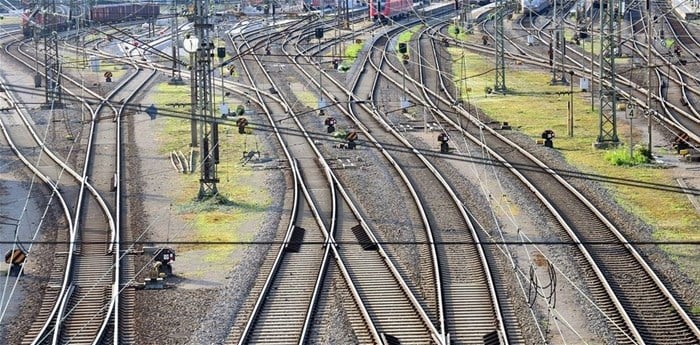For any country, the transport infrastructure networks are some of the most important assets it can have - not only in pure monetary value but also the socio and economic gains that the transportation of people, goods and services brings. Our modern lives are increasingly characterised by our ability to travel, transport assets and goods, and remain connected with other players in the economy.
In South Africa, considering the extent of our transportation-related assets - the sheer kilometres length of roads, coverage of our rail networks and not to mention aviation and maritime transportation - collectively make it one of our largest national assets.
Additionally, just like any system would grow around a framework of infrastructure, so too do economies - because if you can’t move goods, services and people around, your economy stagnates. Transport networks therefore have a critical role to play in unlocking potential at micro and macroeconomic levels within the mainstream and second economies in the country.

Herbert Phahlane is director: traffic and transportation, WSP, Commercial Civils, Africa
But, are we planning and implementing transport projects to get the most out of the opportunities that exist, for today and well into the future? I believe not, and – with my past experience in the public sector and having moved to the private sector - here I’ve outlined my views on what I believe we should be doing differently.
Integrated, long-term planning
This should go without saying but, given the current state of prioritisation of infrastructure projects, it needs to be said. We need a long-term vision that encapsulates how people will live, work and play – and well beyond 2030.
There are transport infrastructure projects and plans being implemented or are in the pipeline. But, have we undertaken any kind of ‘impact assessment’ process to understand – not just the traffic impact, but - if the projects currently being fast-tracked are in fact the right projects; to get the backlog moving, increase transport capacity and as a direct result, influence positive economic growth?
Effective implementation of transport infrastructure projects should be considered in earnest – of what will benefit people, communities, trade and industry. And, in that order. This will better enable us to design based on what the future demand on transport networks will be – to allow us to potentially leapfrog current implementation constraints and get ahead of the demand curve that will support sustainable development and growth going forward.
Driving the vision through collaboration
The bigger picture must involve the integration of major transportation infrastructure projects with provincial and municipal development. It must also take into account planning for and the development of the critical mass of support infrastructure that feeds into and from the primary infrastructure.
Certainly, better coordination is required between authorities that control primary, large-scale infrastructure, and those that manage the secondary and tertiary related infrastructure. However, the responsibility does not rest solely with government departments and these authorities.
The private sector is a significant contributor to transport projects in the country. It also currently employs the bulk of professionals skilled in delivering on transport and major infrastructure projects – where professionals who work within the public sector are often limited in their exposure on project work. While in the past this gap in skills between the public and private sectors is perceived to have been a cause of contention – and particularly with getting projects through the pipeline – there is, in fact, incredible scope for engagement between parties.

This will take a leap of faith, from all parties. However, once open channels of engagement and trust can be established and cemented - based on mutual understanding of each party’s perspective and needs – this will create immense opportunities for collaboration. Currently, the magnitude of what can be achieved through collaboration is unmeasurable, but this could range from the transferring of skills to joint strategic planning initiatives, and delivery through joint ventures or public-private partnerships (PPPs).
Driving a long-term vision through collaboration will be essential to unlocking the country’s true economic potential, and enabling the co-creation of more jobs, trade and cross-industry growth, and particularly through secondary industries.
A changed approach = people-focused transport
In the past, initial major transport infrastructure has always been positioned, designed and implemented around the primary movement of goods and services – and where additions or adjustments are made later to accommodate people. This old way of thinking, that ‘if we build it they will come’, seldom has the desired change effect and more often is met with contention. And, while the movement of goods and services remains critical to unlocking many business, trade and growth corridors, we can no longer afford for how people move between spaces to be an afterthought.
Let’s look at the bus rapid transit (BRT) systems that have been implemented in Johannesburg and Pretoria, as an example. Certainly, these systems have merit and have been implemented to meet more immediate needs to transport people in and out of urban and/or economic nodes to access employment opportunities. However, the systems within Johannesburg and Pretoria are not integrated or connected to each other, which means people are still limited in terms of access to opportunities within the region where they live. Since launching, these systems have also been fraught with challenges – not least of all opposition from the taxi associations and bus driver strikes – that have largely rendered the reputation of the systems as being unreliable.
The Gautrain on the other hand, which has already meaningfully contributed to gross domestic product (GDP) growth in the country since construction, has significantly opened opportunities for people to commute along the Pretoria-Johannesburg corridor. The challenge for many people, however, is access to the Gautrain or the feeding bus stations, as currently these are not fully integrated with the regional public transport systems.
Gilbert Saggia 14 Aug 2018 Across the country, there is a need to expand all modes of public transport. But, such expansions will only be as effective and successful as they are integrated into the larger regional and cross-regional transport networks. Once we can get this right, it will open opportunities to introduce universal travel and transfer rates, with a universal payment system. Not to mention opportunities to cross-pollinate between transport and secondary industries to introduce, for example, but not limited to, Wi-Fi hotspots at bus and train stops or transport nodes and, Internet and cloud-enabled communications to share information and updates with commuters about routes.
Collectively, applying such changes to how we plan, design and build integrated public transport networks will bode increased confidence by people – and towards effecting positive change in mindsets about the reliability, safety and comfort of public transport solutions.
South Africa has certainly got a lot right in its infrastructure, to date. Going forward, however, the true value of our transport networks will be realised when we plan, construct and maintain our infrastructure with a vision of the societal resilience that will continue to build and support the economy of future generations. It’s not a quick fix. And, getting it right will require partners who are not averse to taking a strong and forward-looking approach to plan, design, and engineer an impactful legacy.






















